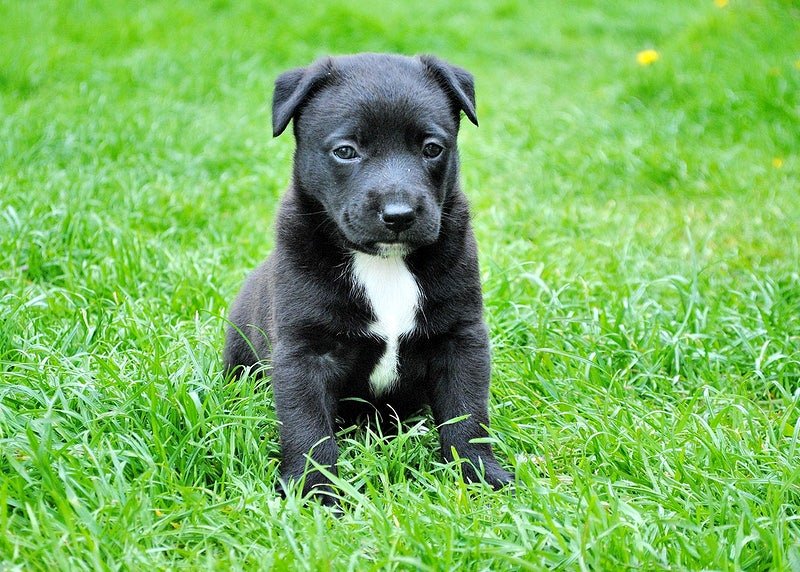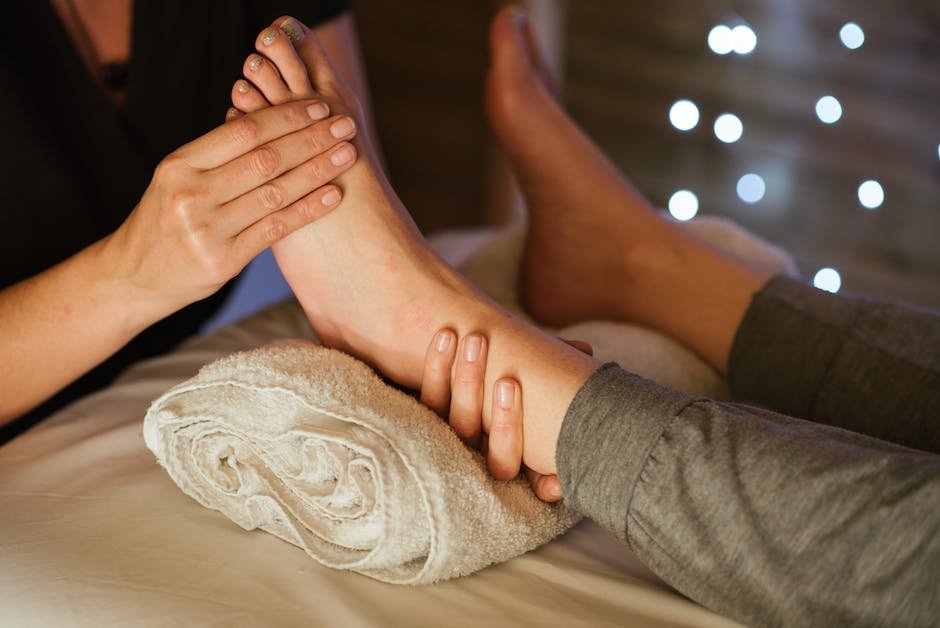The air hangs heavy with anticipation, as thunderous cracks echo through the night. The loud boom of fireworks pierces the tranquility, sending trembles down the spines of those around. But amidst the chaos and confusion, there is a determined puppy, eagerly seeking solace from the terrifying clatter. In a world where loud noises can strike fear into the bravest of hearts, puppy training becomes an art, a gentle dance between finding comfort and conquering the trepidation. Brace yourself for a symphony of advice, as we delve into the realm of puppy training for fear of loud noises, revealing sound strategies to help our furry friends navigate the cacophony of the world around them.
Table of Contents
- Recognizing Signs of Fear in Puppies with Loud Noises: Understanding their Fear Signals
- Creating a Fear-Free Environment: Tips to Minimize Anxiety during Noisy Situations
- Desensitization Techniques: Gradually Introducing Loud Noises to Build Confidence
- Counter-conditioning Methods: Shaping Positive Associations with Noise through Rewards
- Seeking Professional Help: When and How to Consult a Certified Dog Trainer or Behaviorist
- Q&A
- Wrapping Up

Recognizing Signs of Fear in Puppies with Loud Noises: Understanding their Fear Signals
Puppies can be quite vulnerable when it comes to loud noises. Whether it’s thunder, fireworks, or even the sound of a vacuum cleaner, these sudden and unexpected sounds can trigger fear in our furry friends. Understanding their fear signals is crucial in helping them feel safe and secure.
Body Language: When faced with a loud noise, puppies may exhibit various fear signals through their body language. Look out for trembling, cowering, or the tail tucked between their legs. They may also try to seek shelter in a safe place, showing signs of excessive panting or drooling. It’s important not to ignore these body cues, as they indicate their discomfort and fear.
Vocalizations: Puppies may express fear through different vocalizations when exposed to loud noises. Whimpering, barking excessively, or howling can be signs that they are distressed. These vocal cues can be their way of seeking comfort or trying to vocalize their anxiety.
Changes in Behavior: Pay attention to any changes in your puppy’s behavior when they are startled by loud noises. They might become more clingy, seeking comfort and reassurance from their owners. On the flip side, some puppies may become more withdrawn or hide, showing signs of avoidance. It is important to respect their need for space during these moments.
By recognizing these fear signals, we can create a supportive environment for our puppies and help them overcome their fear of loud noises. Offering a secure and quiet space, providing positive reinforcement, and gradually desensitizing them to these noises can go a long way in building their confidence. Remember, patience and understanding are key in helping our puppies grow into emotionally resilient companions.

Creating a Fear-Free Environment: Tips to Minimize Anxiety during Noisy Situations
In today’s bustling world, it’s important to create a fear-free environment to help minimize anxiety during noisy situations. Whether it’s a bustling city street, a crowded event, or even a thunderstorm, there are simple yet effective strategies to ease your worries and find tranquility amidst the chaos.
1. Find your sanctuary: Identify a peaceful place where you can retreat to when the noise becomes overwhelming. It could be a quiet corner in your home, a serene park, or even a cozy library. Having a designated space to escape to can provide a sense of security and much-needed relief.
2. Use noise-cancelling headphones: Invest in a good pair of noise-cancelling headphones to create a personal oasis wherever you go. These innovative devices can filter out unwanted sounds, allowing you to enjoy blissful silence or listen to soothing music that helps you relax and unwind.
3. Practice deep breathing and mindfulness: When surrounded by noisy situations, take a moment to focus on your breath. Inhale deeply through your nose, hold it for a few seconds, and exhale slowly through your mouth. This simple breathing exercise can help anchor you in the present moment, reducing anxiety and promoting a sense of calmness.
Remember, creating a fear-free environment is a personal journey, and it’s essential to find techniques that work best for you. By implementing these tips and being proactive in managing anxiety during noisy situations, you can navigate the world with confidence and find solace amidst the chaos.

Desensitization Techniques: Gradually Introducing Loud Noises to Build Confidence
When it comes to helping individuals overcome their fear of loud noises, desensitization techniques have proven to be highly effective. By gradually introducing loud noises in a controlled and safe environment, individuals can build their confidence and reduce their fear and anxiety. Here are some techniques that can be used:
- Start small: Begin with low-intensity sounds such as soft music or gentle knocking. This helps individuals ease into the process and minimizes any potential distress.
- Progressive exposure: Slowly increase the volume or intensity of the noises over time, allowing individuals to adjust to higher levels gradually. This gradual exposure helps them adapt and overcome their fear more effectively.
- Positive reinforcement: Encourage individuals and reward their progress as they face louder noises. Positive affirmations and acknowledgments can boost their confidence and motivate them to continue their journey towards desensitization.
It’s important to note that these techniques should be personalized to fit the individual’s specific needs and comfort levels. Patience and understanding are key throughout this process, as everyone progresses at their own pace. Gradually, individuals will become more resilient, self-assured, and better equipped to handle loud noises with confidence.

Counter-conditioning Methods: Shaping Positive Associations with Noise through Rewards
Effective Techniques to Foster Positive Associations with Noise
When it comes to counter-conditioning anxiety or fear of noise in pets, shaping positive associations through rewards can be a highly effective approach. By implementing carefully planned methods, pet owners can help their furry companions develop a more positive perception of noise. Here are some techniques that can be employed:
- Classical conditioning: Introduce the noise gradually and pair it with something enjoyable, such as treats, playtime, or favorite toys. Repeat this process several times, gradually increasing the volume of the noise, to help associate the noise with positive experiences.
- Desensitization: Gradually expose the pet to the noise at a low volume, ensuring they remain calm and relaxed. Increase the volume incrementally over time, ensuring the pet remains comfortable throughout the process. This method helps desensitize the pet to the noise and reduces their fear or anxiety response.
- Counter-conditioning: Engage the pet in a positive activity or reward when the noise is present. For example, offer their favorite treat or engage in a play session. This reinforces the positive association and helps shift their focus away from the noise.
- Professional guidance: Consider seeking guidance from a professional trainer or behaviorist experienced in counter-conditioning methods. They can provide expert advice, personalized strategies, and hands-on support to ensure the best outcome for your pet.
By employing these counter-conditioning methods, pet owners can help their beloved companions overcome their fear or anxiety of noise, paving the way for a happier and more relaxed existence.
Seeking Professional Help: When and How to Consult a Certified Dog Trainer or Behaviorist
Dogs can bring so much joy and companionship to our lives. However, there may be times when their behavior becomes challenging or problematic. In these instances, it’s important to consider seeking the assistance of a certified dog trainer or behaviorist. Here are some signs that indicate it may be time to consult a professional:
- Persistent behavioral issues: If your dog consistently displays aggressive, fearful, or destructive behavior, it’s crucial to seek professional help. A certified dog trainer or behaviorist can identify the underlying causes and implement effective training techniques to address these issues.
- Difficulty with basic obedience: If your dog struggles with basic commands such as ”sit,” “stay,” or “come,” it may be beneficial to enlist the guidance of a professional. They can provide expert guidance in teaching your dog these essential skills.
- Problems with socialization: If your dog displays fear or aggression towards other dogs, animals, or people, it’s crucial to address these issues promptly. A certified behaviorist can develop a tailored plan to help your dog become more comfortable and confident in various social situations.
When it comes to choosing a certified dog trainer or behaviorist, there are a few key considerations to keep in mind. Look for professionals who have undergone extensive training and have experience working with a variety of breeds and behavioral issues. Additionally, ensure that the trainer or behaviorist uses positive reinforcement techniques to promote long-lasting behavioral changes. By seeking professional help, you can provide your furry friend with the guidance they need to become a well-behaved and happy member of your family.
Q&A
Q: How can I help my puppy overcome its fear of loud noises?
A: One effective way is to desensitize your puppy to loud noises gradually. Start by playing low-volume recordings and gradually increase the volume over time to help them build confidence and associate loud noises with positive experiences.
Q: What are some signs that my puppy is afraid of loud noises?
A: Common signs include trembling, cowering, excessive drooling, hiding, or trying to escape. Some puppies may also urinate or defecate indoors when exposed to loud noises.
Q: Can I comfort my puppy during loud noises?
A: While it’s tempting to cuddle and comfort your frightened puppy, it’s best to avoid reinforcing their fear. Instead, create a safe space with cozy blankets and toys where they can retreat when they feel scared.
Q: Should I expose my puppy to loud noises directly or gradually?
A: Gradual exposure is key. Exposing your puppy directly to extremely loud noises might overwhelm them and reinforce their fear. Slowly introduce loud sounds in a controlled and positive manner.
Q: Can I use sound masking to help my puppy?
A: Yes, sound masking techniques, such as white noise machines or calming music, can help drown out or mask the intensity of loud noises that may frighten your puppy.
Q: Are there any professional training options available?
A: Absolutely. Enrolling your puppy in a puppy training class or seeking assistance from a professional dog trainer who specializes in fear-related issues can be beneficial for both you and your furry friend.
Q: How long does it usually take for a puppy to overcome its fear of loud noises?
A: The duration varies depending on the puppy’s individual temperament and the severity of their fear. With consistent training, patience, and positive reinforcement, many puppies can overcome their fear within a few months.
Q: Can other dogs or pets help my puppy overcome its fear?
A: Sometimes, the presence of a confident and well-adjusted dog or pet can provide reassurance to a fearful puppy. However, it’s important to ensure that the introduced pet is calm and non-reactive to loud noises themselves.
Q: Can I use treats to help my puppy associate loud noises with positive experiences?
A: Absolutely! Using treats as positive reinforcement during sound exposure can help your puppy create positive associations with loud noises. Gradually increase the intensity of the noises while offering treats to reinforce the positive connection.
Q: Are there any natural remedies I can use to help calm my puppy during loud noises?
A: Some natural remedies, such as lavender oil or specialized pheromone diffusers, can have a calming effect on anxious puppies. However, it’s essential to consult with a veterinarian before using any natural remedies.
Wrapping Up
As we bid farewell to this captivating exploration of puppy training for fear of loud noises, we hope you feel equipped with the soundest advice to guide your furry companion towards a peaceful and confident existence. Remember, the journey towards overcoming these phobias requires patience, understanding, and above all, unwavering love.
Tales of boisterous thunderstorms and explosive fireworks need not be harrowing experiences for our four-legged friends. With our carefully crafted methods, you can empower your precious pup, transforming their trembling paws into steady steps of assurance.
As you embark on this training endeavor, embrace the wonders of positive reinforcement and gentle desensitization. Treat each noisy encounter as an opportunity for growth, shifting fear into courage and anxiety into calm. Gradually exposing your pup to soft ambient sounds, gradually increasing volume, will help them develop resilience and trust in their surroundings.
Yet, let us not forget the significance of empathy on this journey. Just as we seek solace in the comforting arms of a loved one during times of uncertainty, our furry friends yearn for our companionship and understanding. Be the steady lighthouse guiding them through the turbulent sea of noise, standing tall as a beacon of reassurance.
In this harmonious symphony of training and love, do not overlook the importance of creating a safe retreat for your pup. A cozy den filled with familiar scents and comforting toys acts as their sanctuary when the world outside becomes overwhelming. Nurture this sacred space, where they can seek solace and regain their inner peace.
So, dear reader, armed with knowledge and compassion, embark on this remarkable journey alongside your loyal companion. The road may be paved with unexpected challenges, but every step taken shall lead to the crescendo of triumph, where fear is replaced by resilience and timidity transformed into unwavering confidence.
Remember, your pup eagerly awaits the opportunity to overcome their fears, to revel in the symphony of life without trepidation. With a kind heart and a gentle hand, let us guide them towards the harmonious melody of fearlessness.
As we part ways, let the symphony continue to play, resonating within the hearts of both you and your beloved furry companion. Together, you shall embark on a lifelong duet where love conquers all fears. Adieu, and may your journey be filled with joyous sounds and wagging tails.
As an affiliate, my content may feature links to products I personally use and recommend. By taking action, like subscribing or making a purchase, you’ll be supporting my work and fueling my taco cravings at the same time. Win-win, right?
Want to read more? Check out our Affiliate Disclosure page.